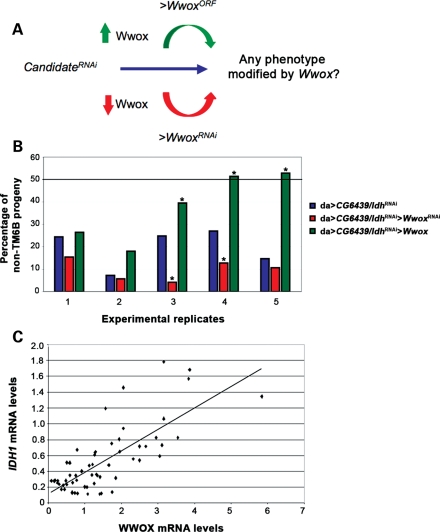Figure 3.
In vivo functional interactions of Wwox with CG6439/Idh. (A) Rationale of the in vivo genetic screens for Wwox functional interactors in Drosophila. Flies with ubiquitous knockdown of the candidate interactors alone were assayed for any resultant phenotypes that could be modified by either decreased or increased levels of Wwox. (B) Wwox interacts genetically with CG6439/Idh in viability assays. A deviation from the expected proportion (50%, indicated by the bold line) of non-TM6B progeny (see Supplementary Material, Fig. S1A) was observed when CG6439/Idh was knocked down ubiquitously (blue), indicative of a decrease in viability. This decrease in viability (blue) was enhanced when Wwox levels were decreased (red) and suppressed when Wwox levels were increased (green). Chi-square test was performed on each of the five separate experimental replicates and ‘*’ denotes statistical significance with P < 0.05. (C) Correlation of WWOX and IDH1 transcript levels in human cancer cell lines. qPCR analyses of WWOX and IDH1 transcript levels were determined for four different time points/confluencies in each of 15 exponentially growing human cancer cell lines. Regression analysis of WWOX and IDH1 mRNA levels revealed a positive correlation with a P-value of 2.5E−12 (see also Supplementary Material, Figs S2, S3 and Table S2).

